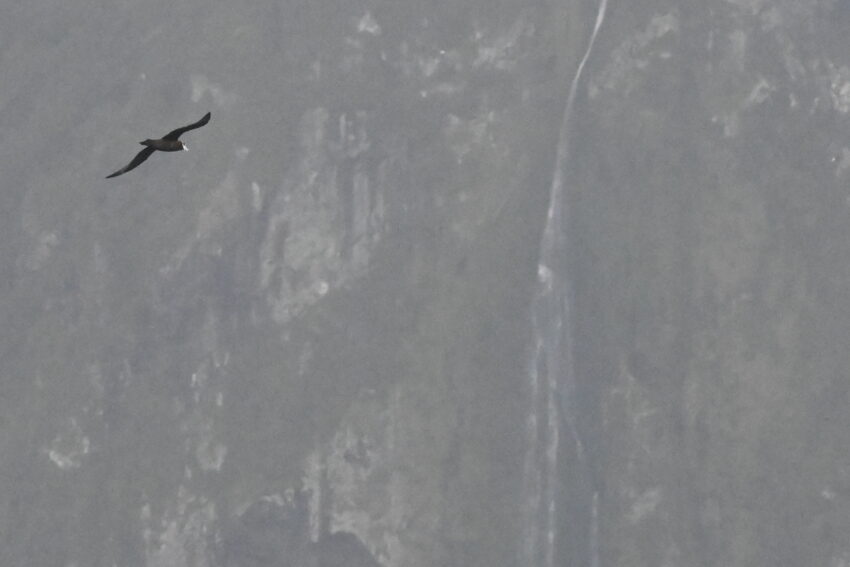(Today’s Chronicle can be found here.)
We’re not due to depart from the ship until 8:30 am, but there’s a chance that timings might be moved up. So we’re up shortly after 6 am with room service expected at 6:30 am.
And we’re able to get some beautiful sunrise shots as we steam into Tristan da Cunha:

I did not sleep well the previous night. Every change to speed felt as though we might be arriving early, while I kept mentally measuring the swell to see whether it will work for a landing.
But no, we’re right on time, and we watch as dawn and Wind reach Tristan at the same moment.

Tristan’s settlement – Edinburgh of the Seven Seas – comes into view:
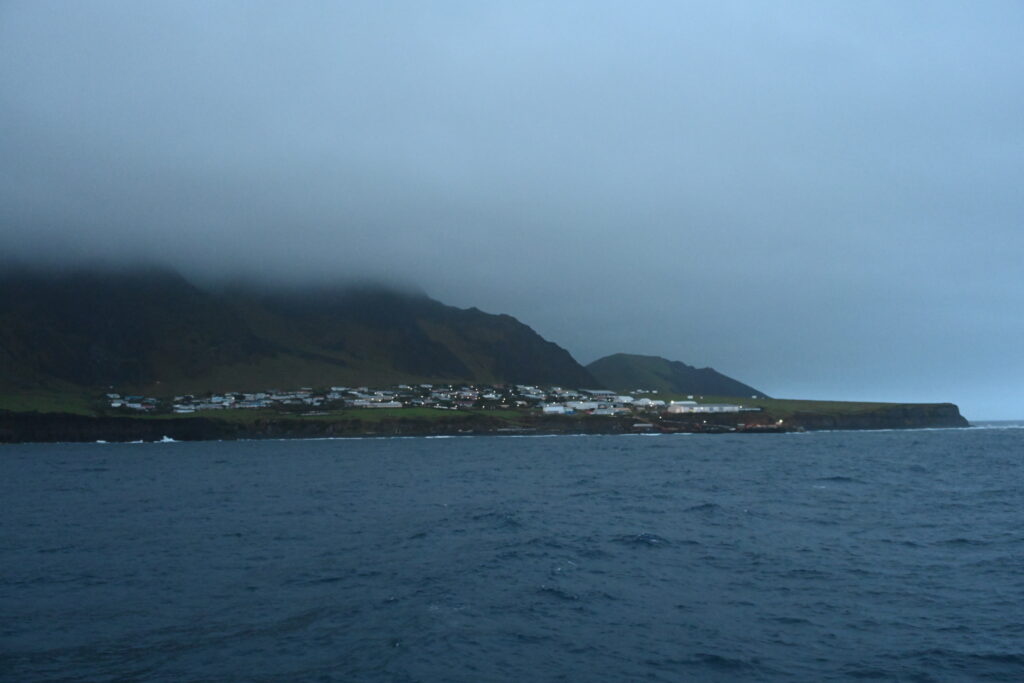
Zodiacs are lowered, and we wait with baited breath.
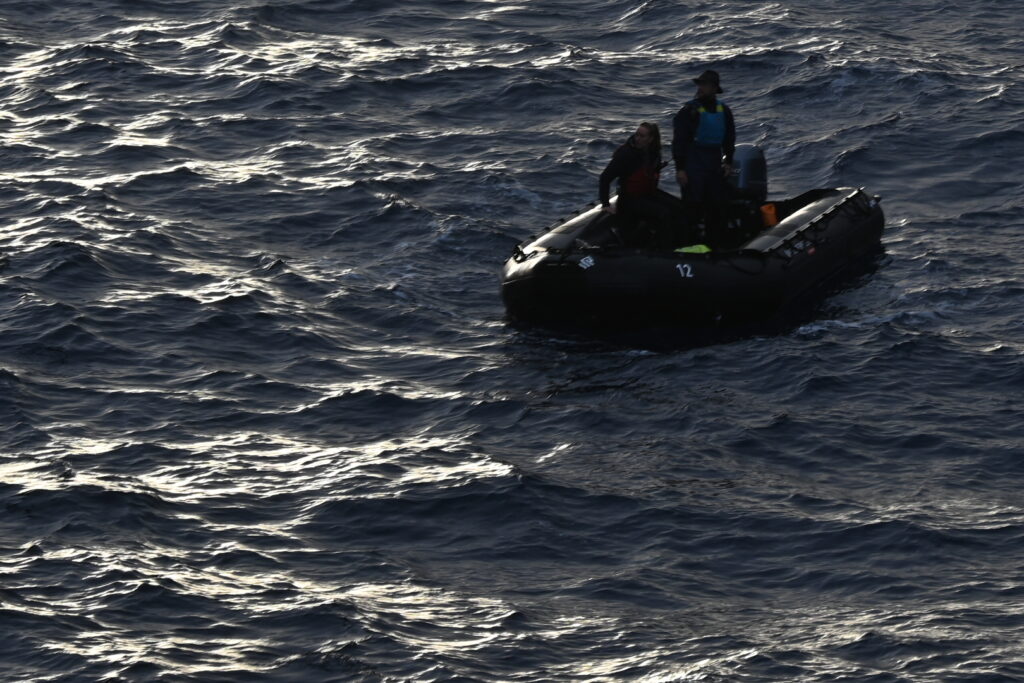
And we watch as the occasional surge swamps the platform.
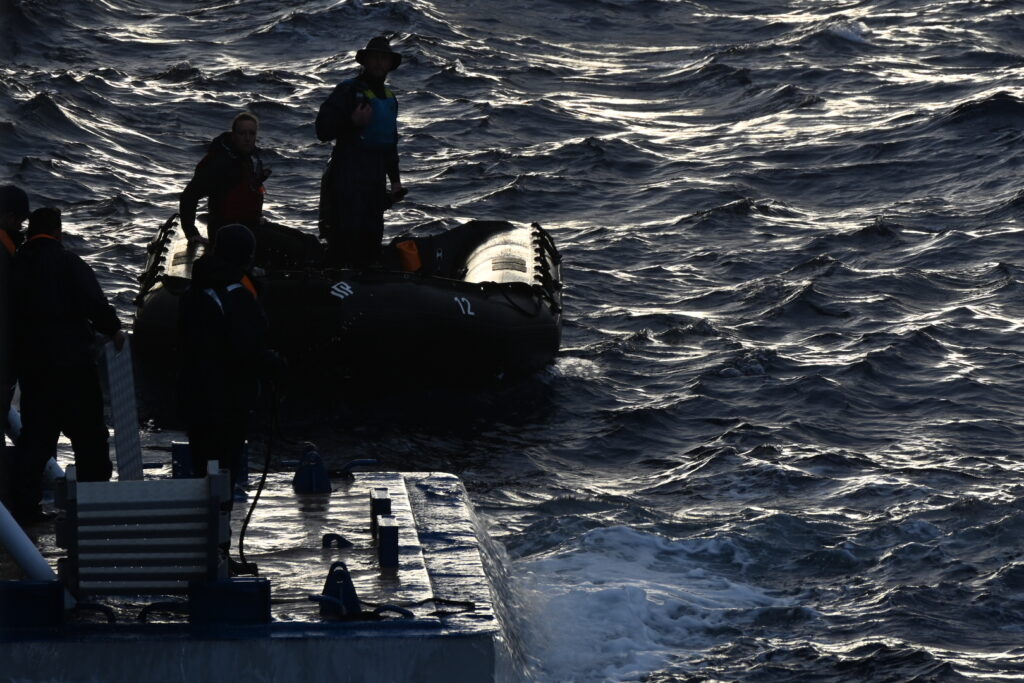
We know it’s not looking good.
But how can we abandon even the thinnest hope that we might visit this incredible place?

Sure enough, the second scout zodiac is soon raised back up onto the platform. The official announcement comes soon after – we will not be landing at Tristan today.
Instead we head to the top deck to walk – and to watch as the Administrator of Tristan is brought onboard.
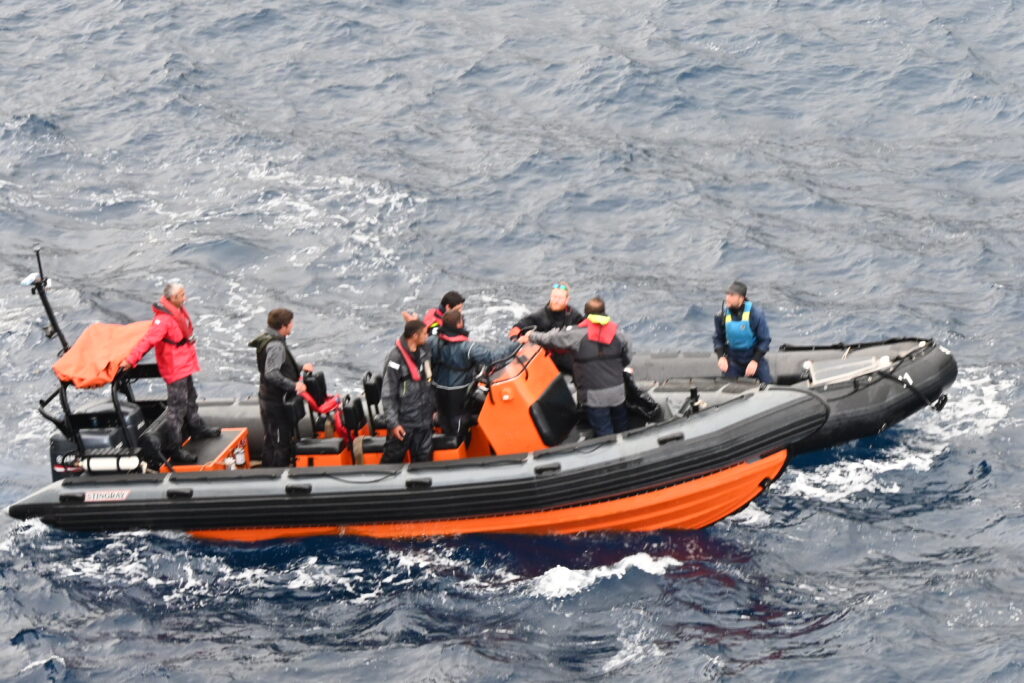
Along with some sundries, perhaps?
There’s no question they made the right call. Even if the swell itself wasn’t terrible, the surf is pounding against the shore.
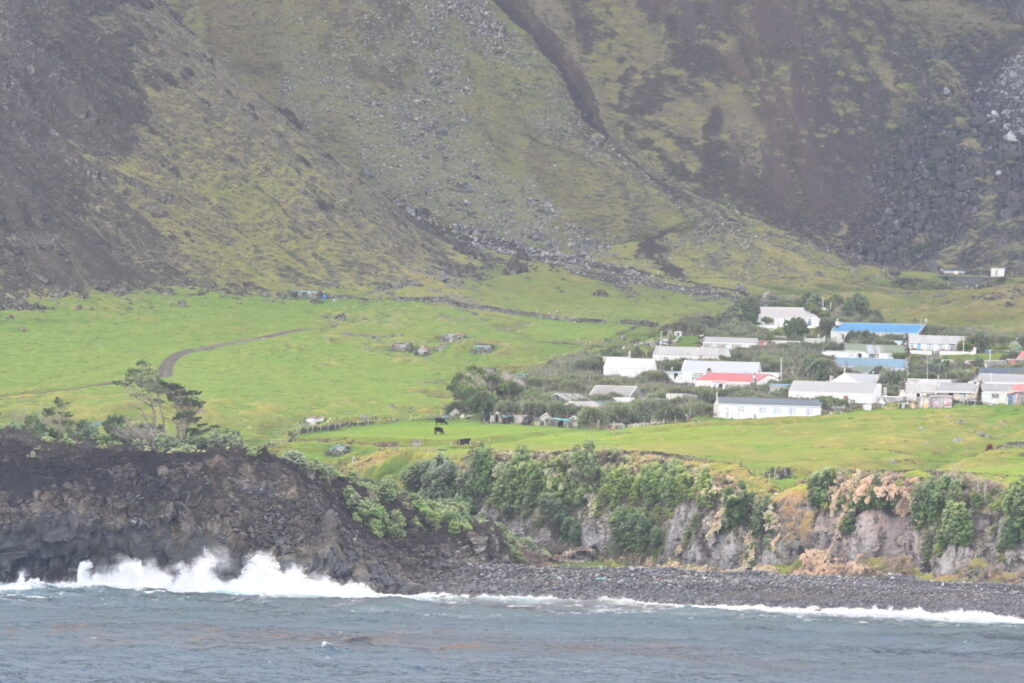
The hour ticks on, and the town begins to come to life. We can see vehicles in the distance ferrying people about.
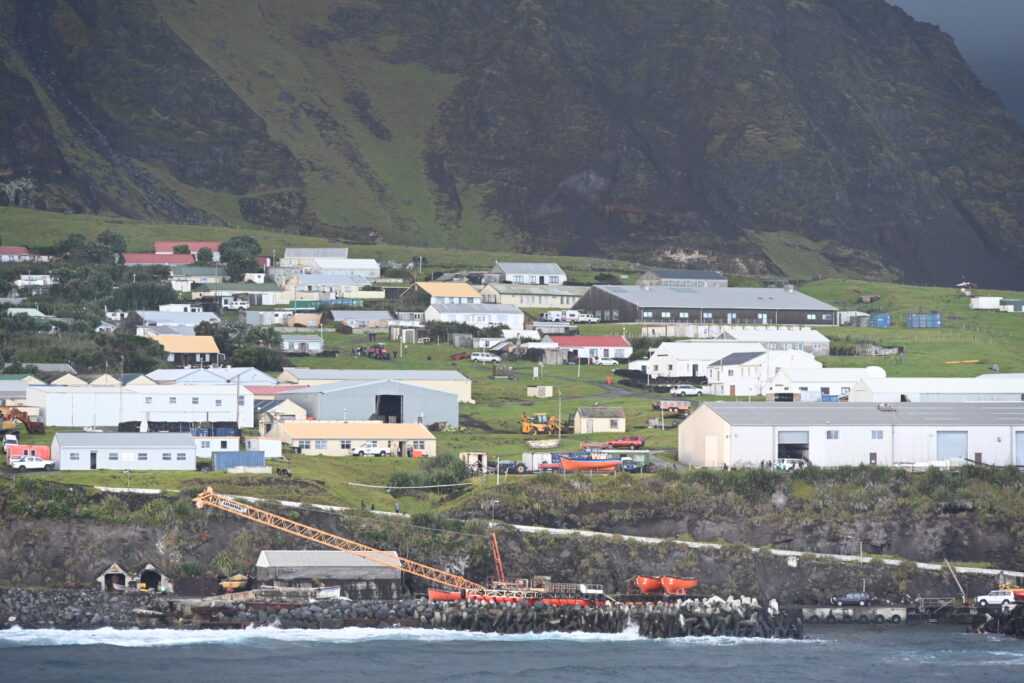
But soon the Tristanian rigid inflatable boat returns to their harbour.
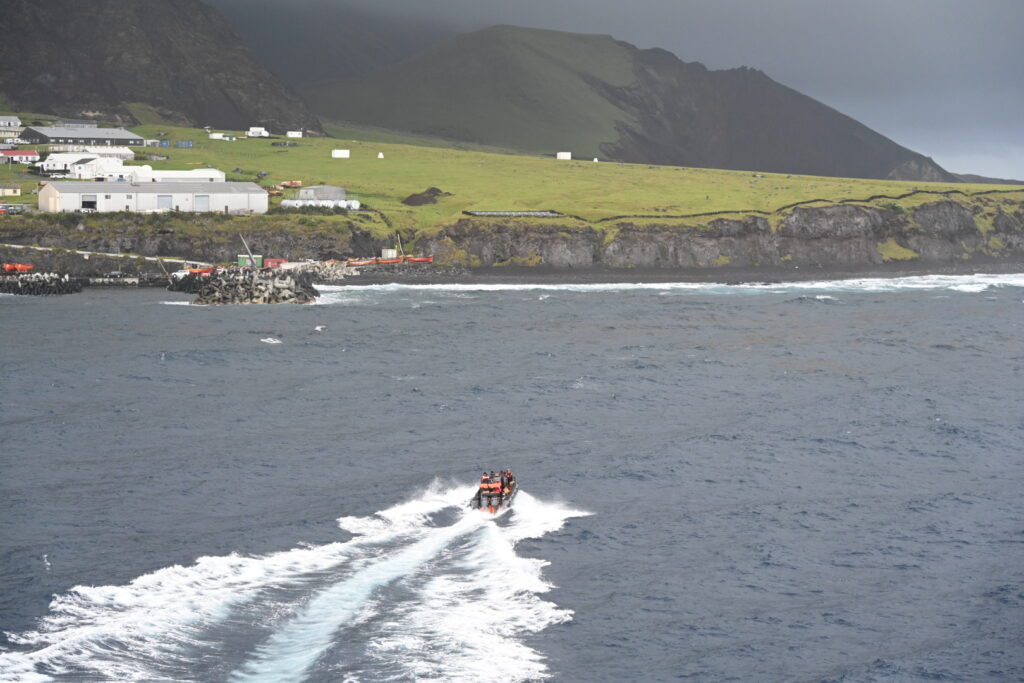
We take one last glimpse at the windswept shores:
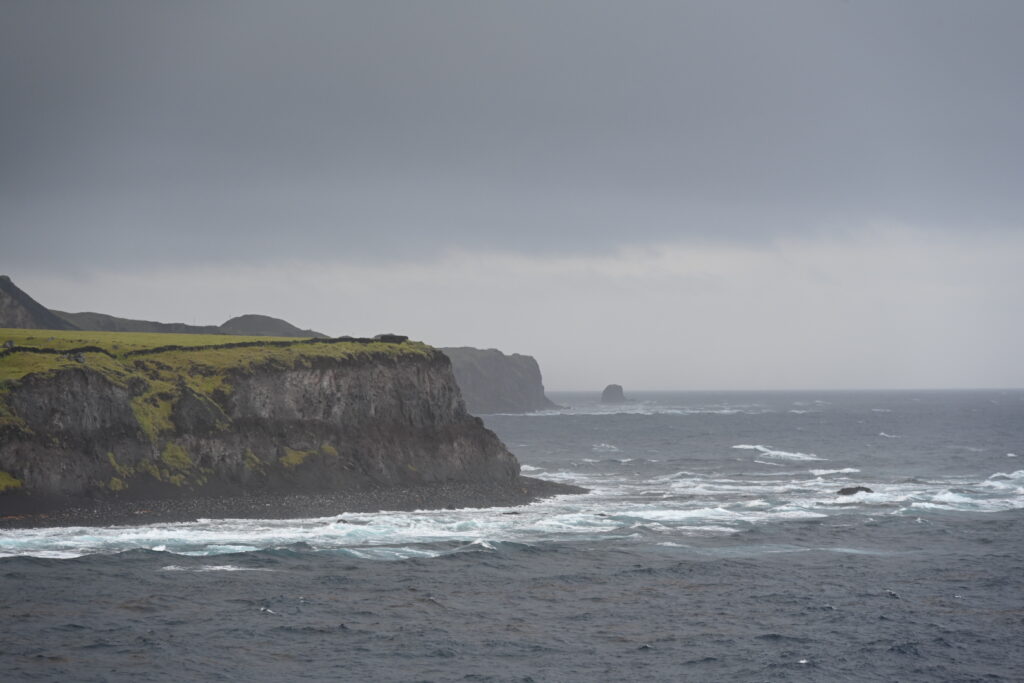
And we sail away from the Settlement:
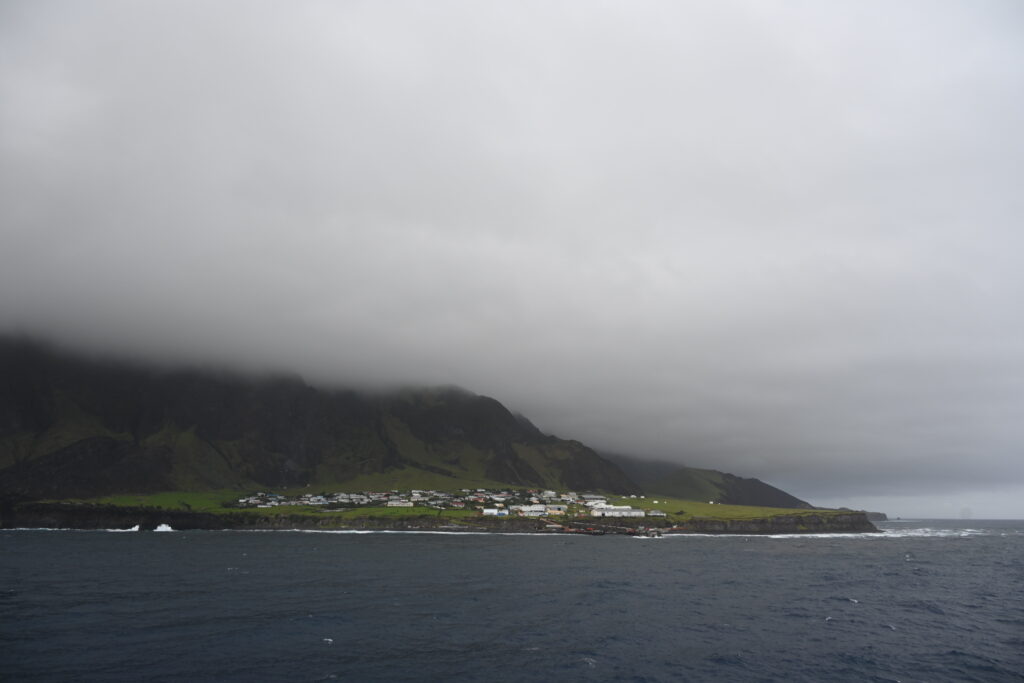
Unlike iceberg A23a and Shag Rock, at least conditions are fair enough to merit a sail-past. And the shoreline is stunning:
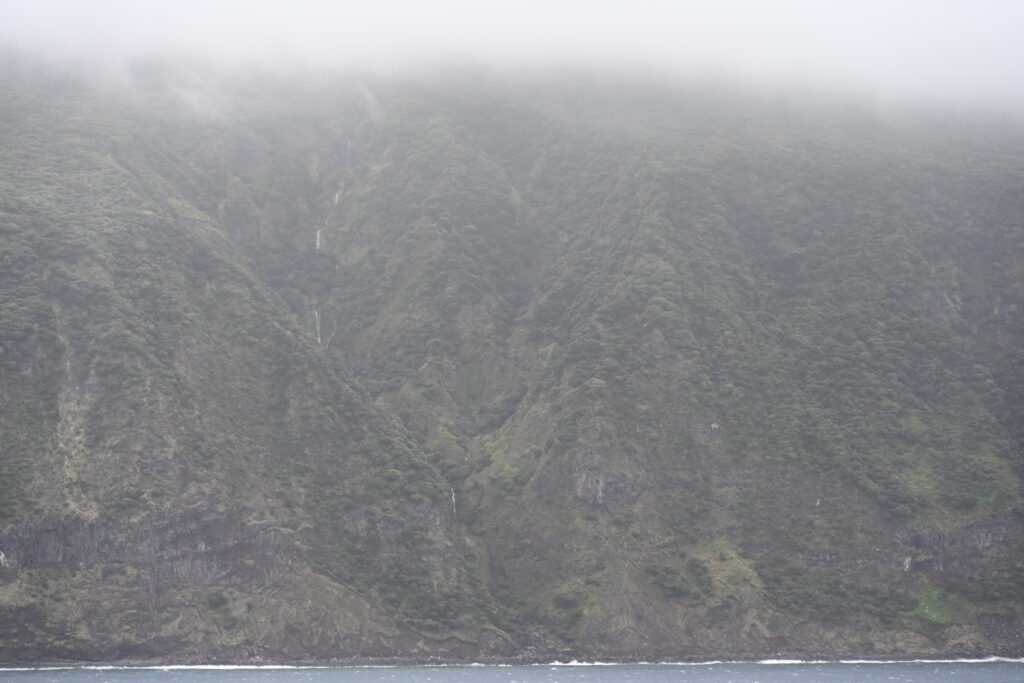
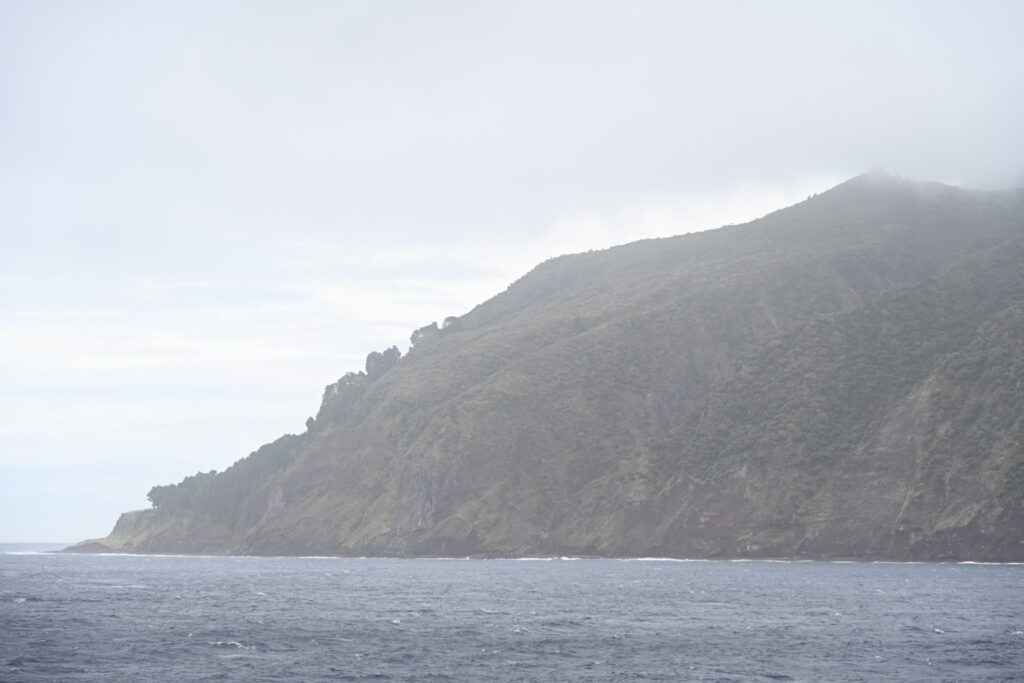
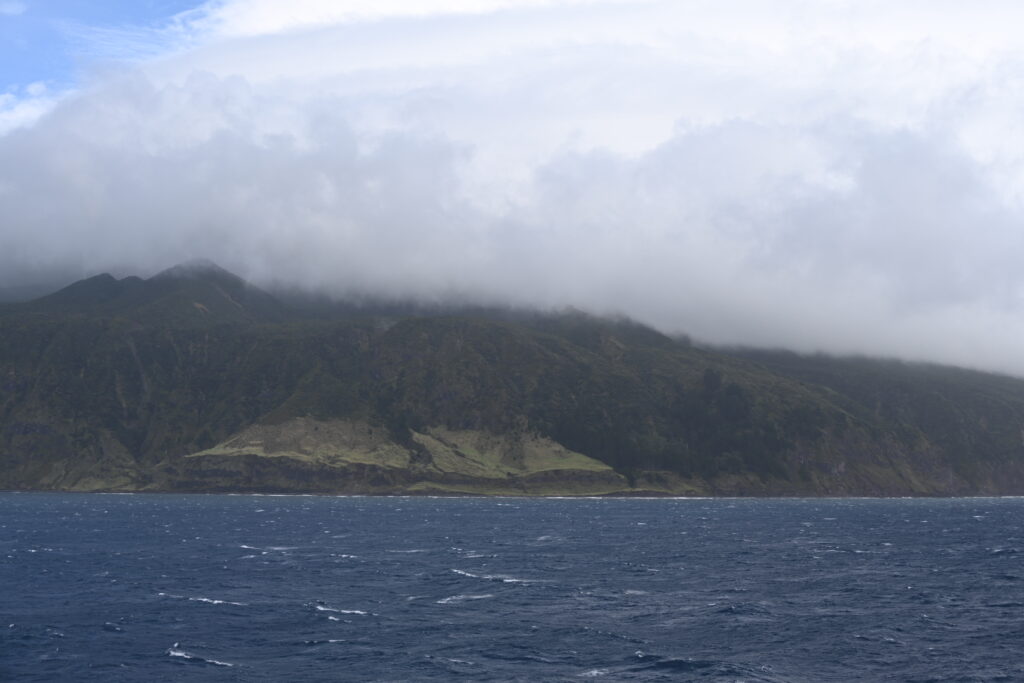
As is the wildlife:
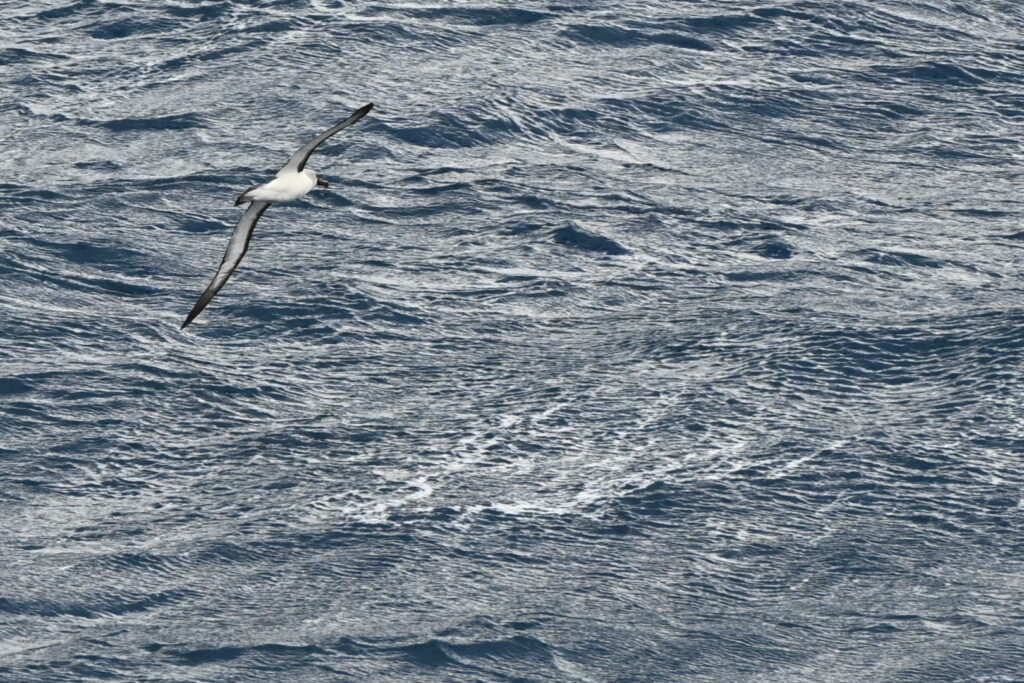
But soon Tristan itself also disappears from view:
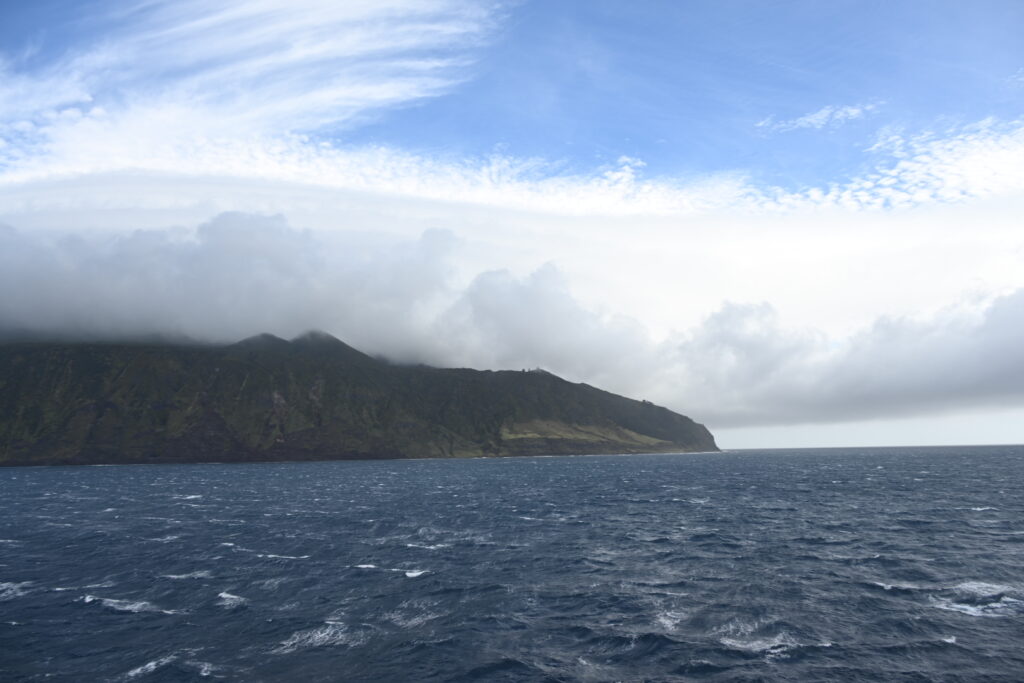
The wind gusts are truly immense, hitting Beaufort 12 – or hurricane force winds in excess of 120 km per hour. Spray is whipped up by the air:
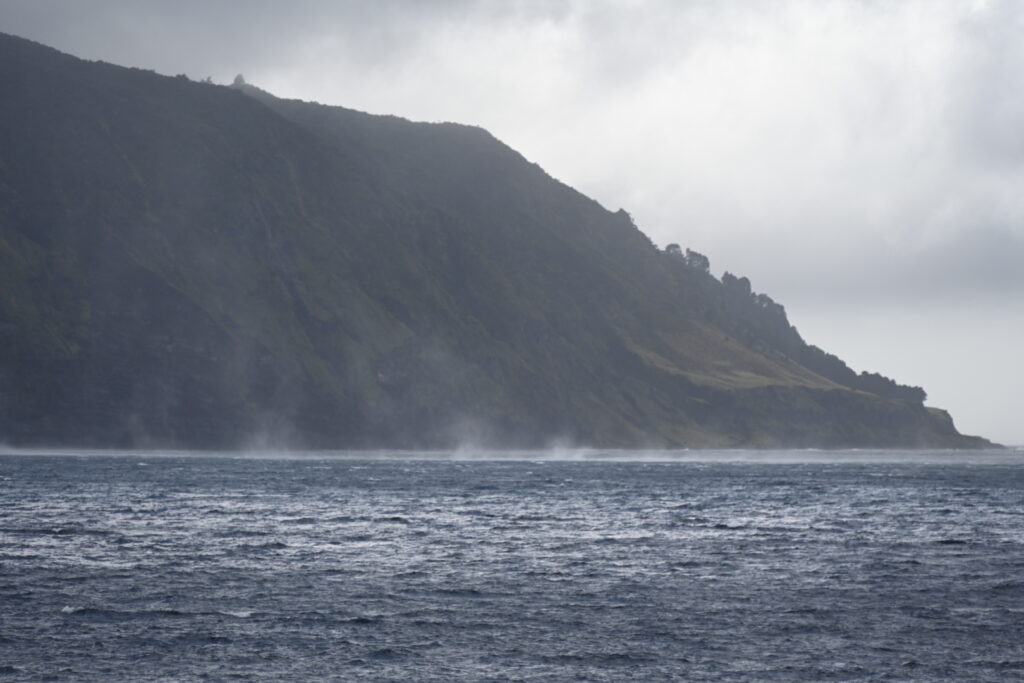
Not a good time to be out on deck. We take a brief break for the buffet lunch at La Terrazza:
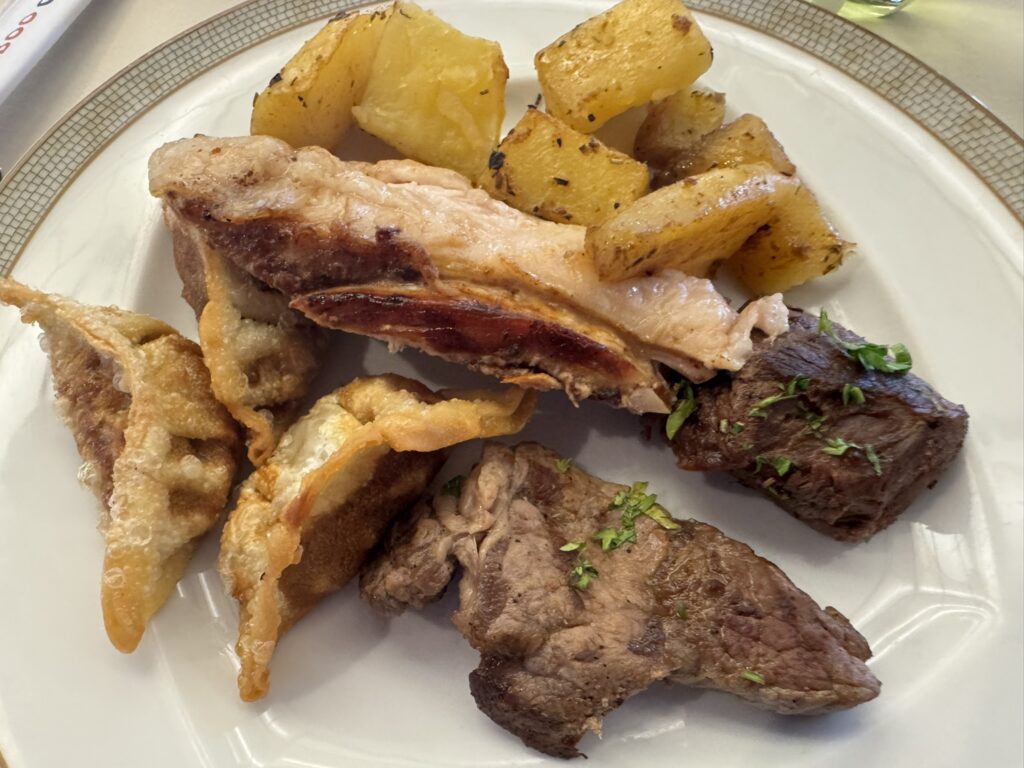
We then carry on, away from Tristan, bound for Nightingale Island.

Our original itinerary had called for us to land here – or to attempt a zodiac cruise – but we are being chased by a severe storm. We’ll manage a ship’s cruise of here and Inaccessible Island, and then it’s time to be on our way. (No time to visit Gough, sadly.)
Again, the stunning beauty of this part of the world – rough and verdant, stark yet full of life.
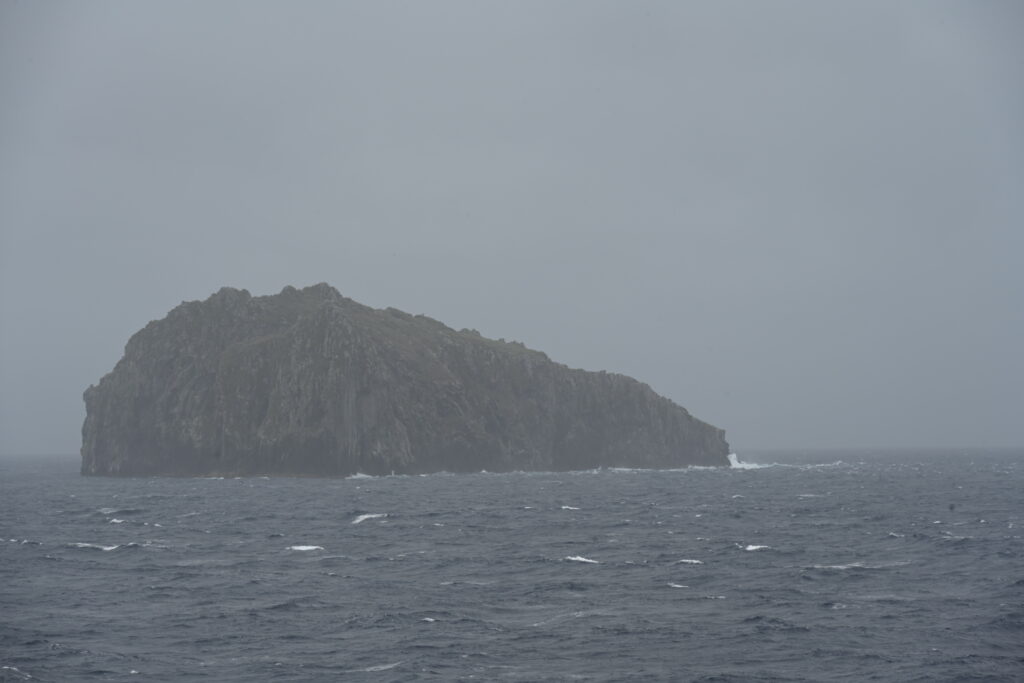
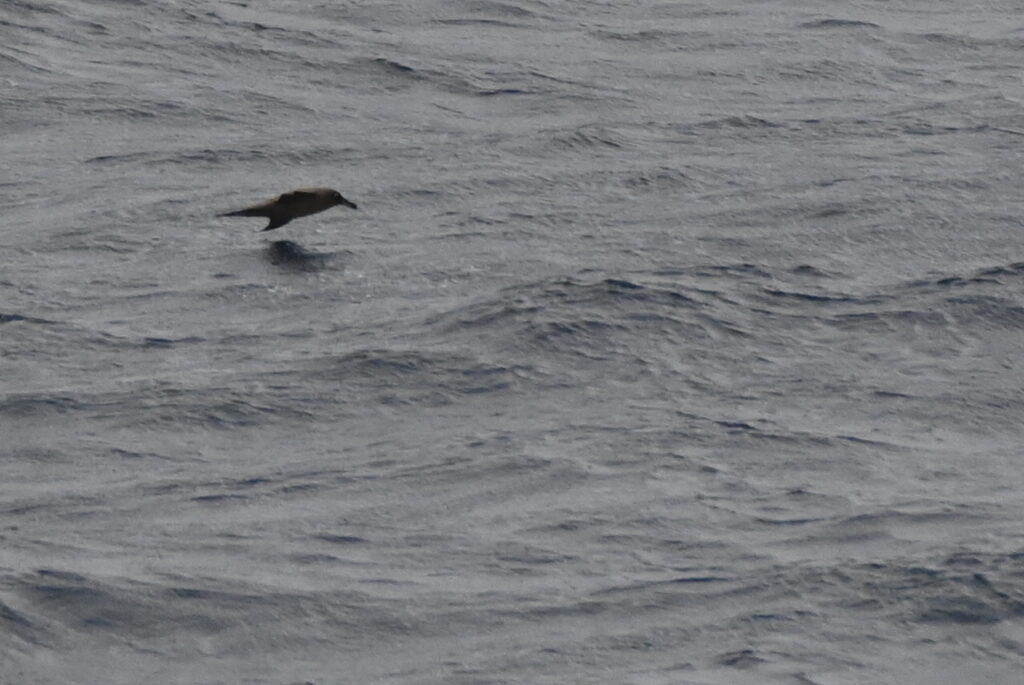
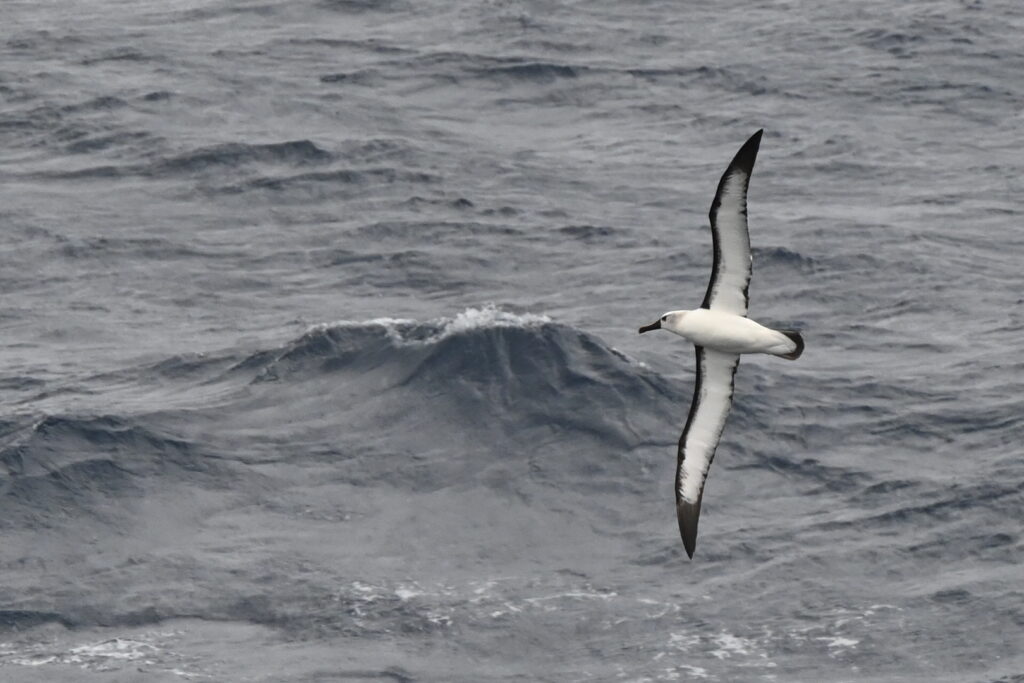
And for the Tristanians who just need to get away from it all – a holiday home on Nightingale:

Mind the front porch:

We even manage to spot some Northern rockhoppers in the distance:
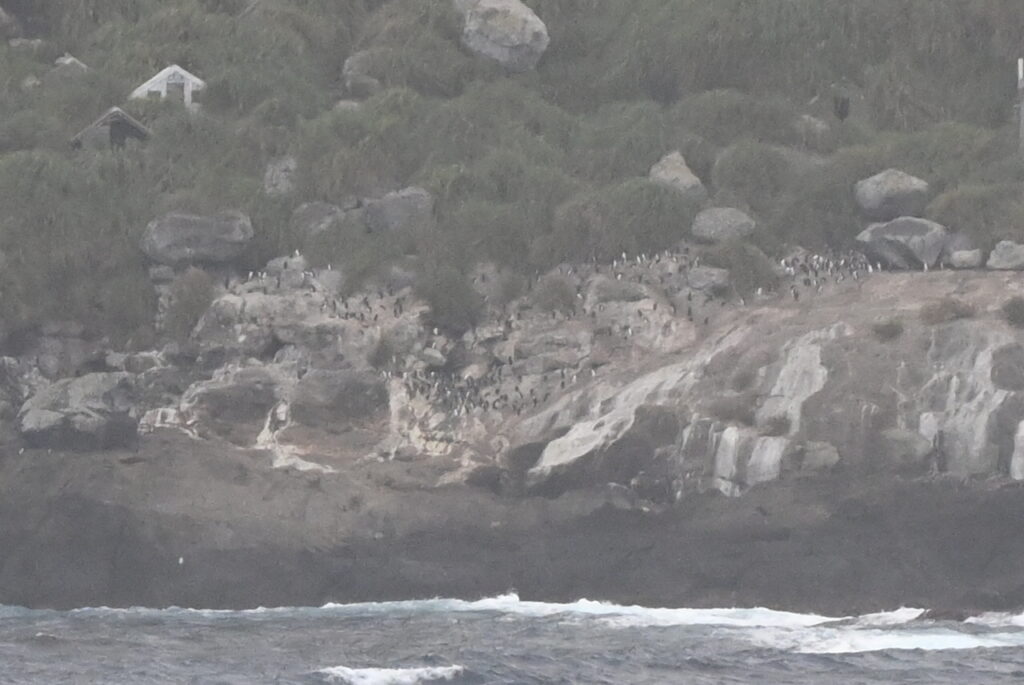
Would’ve loved to see them up close, but we did get to spend a bit of time with their southern cousins in the Falklands at least.
We also spot a royal tern:
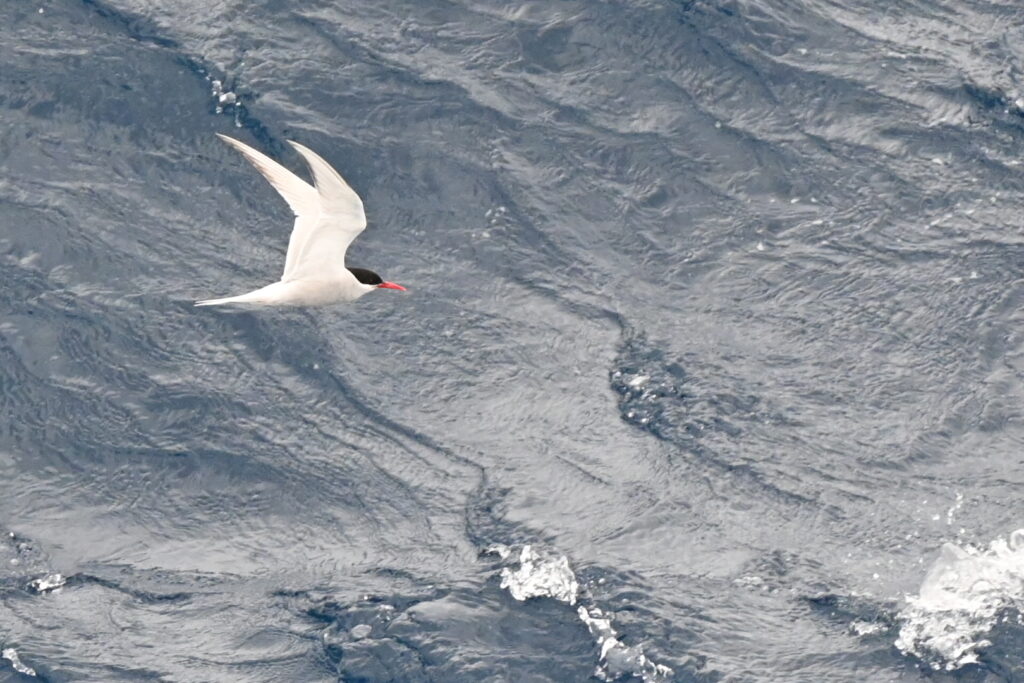
And then we must say goodbye to Nightingale as well:
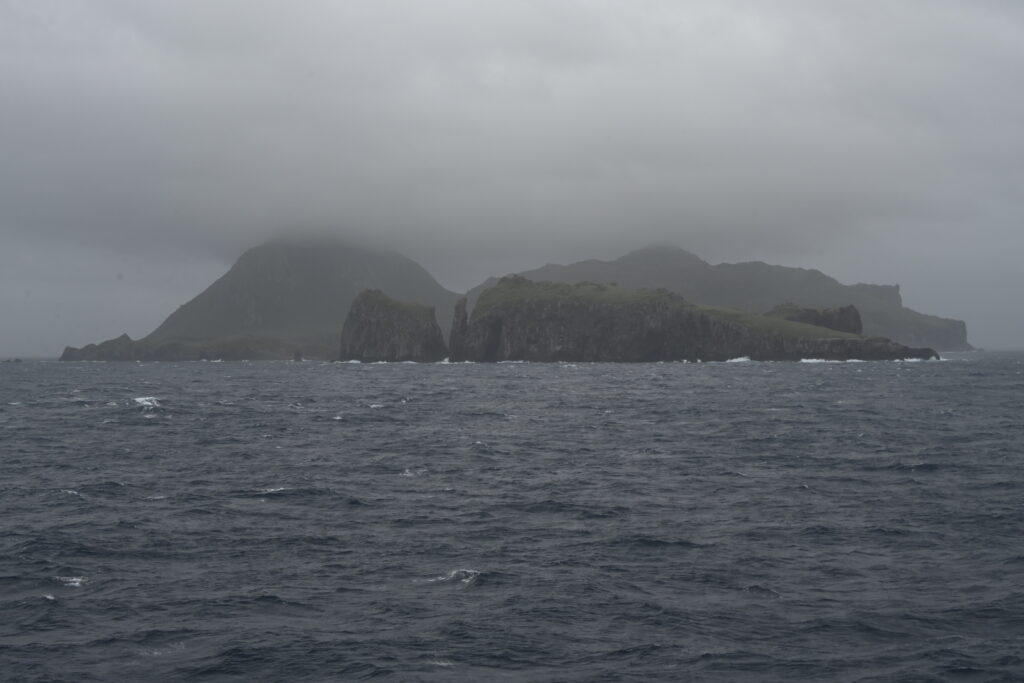
Last – but by no means least – we reach Inaccessible Island, so named because Dutch sailors were not able to land after spotting the island in 1652.
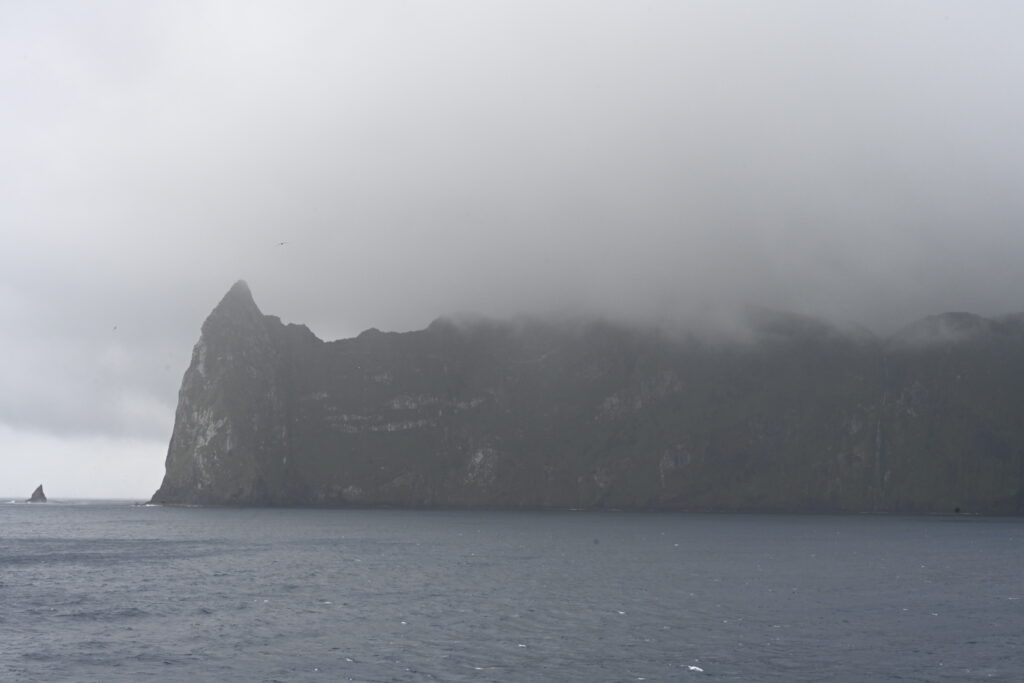
It’s home to some 6 million seabirds, which is more than the seabird population of the United Kingdom.
The ruggedness of this place gets inside of me in a way I haven’t expected.

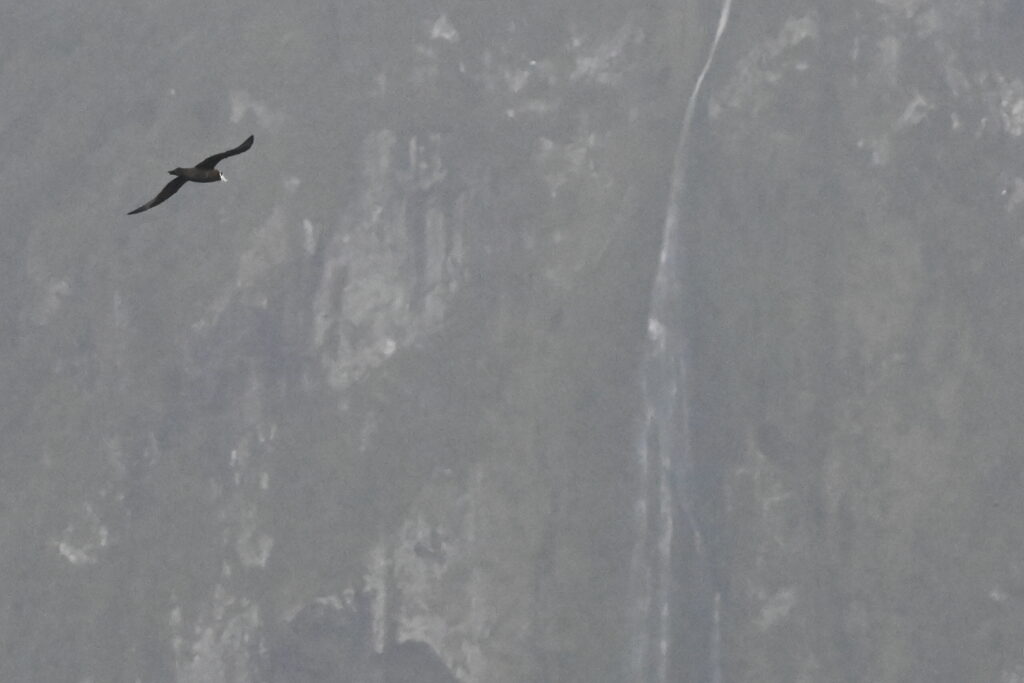
As Martin says, it harkens back to a time and a place before humans. I’d love to come back and attempt another landing one day, fool’s errand that may be.
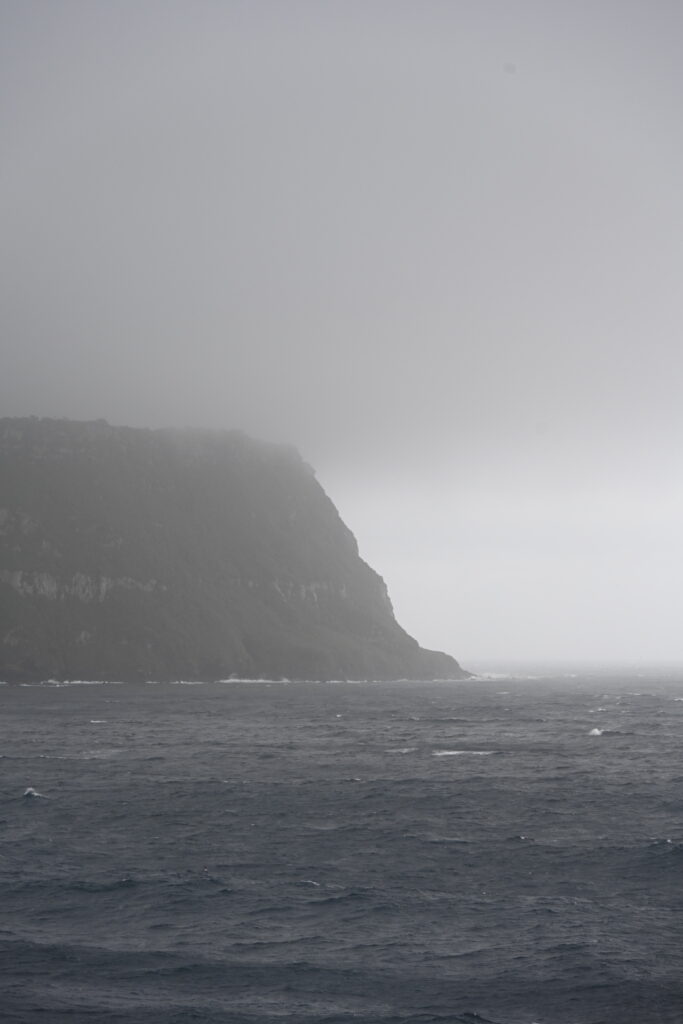
Time again to say goodbye.
Off to recaps, where Jamie explains in painstaking detail why we couldn’t land today:
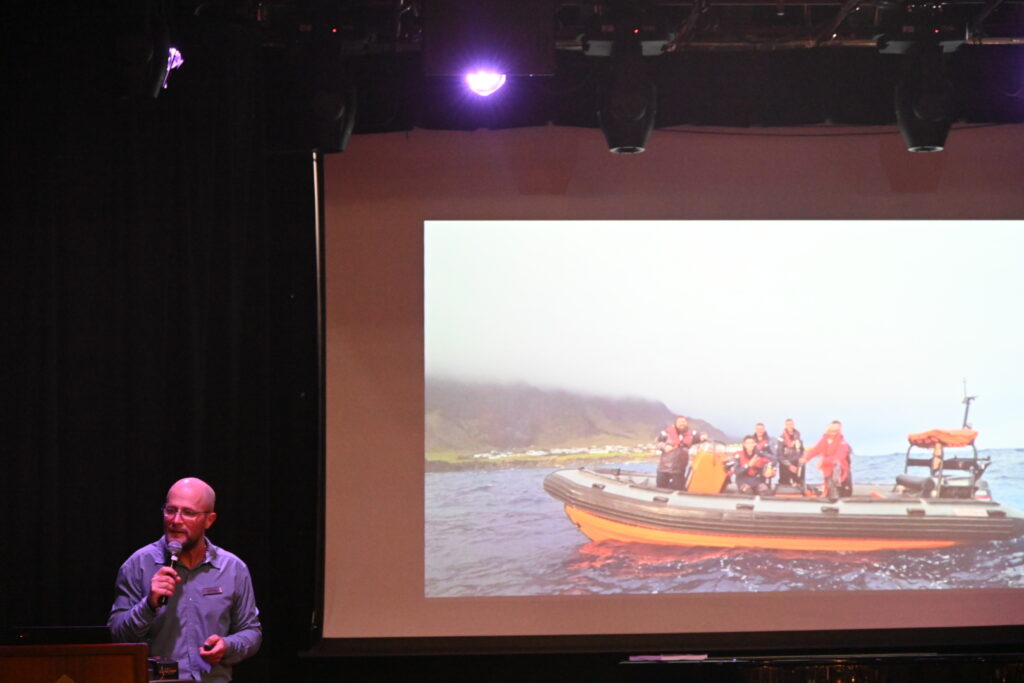
He is of course quite right, and it is relieving in some ways to know that we definitely were not going to land. But it still hurts.
Jamie further reminds us that we are now bound for Africa to escape the storm. Even with this early departure we are still likely to experience more than 4 metres of sea state, much of it coming at us from the side. Time to stay low and in the middle of the ship as much as possible.
It’s not entirely clear what our early departure means for our excursions, but they are looking into it – they hope to be able to offer another day of activities in Saldanha.
Greg introduces us to the concept of birding:
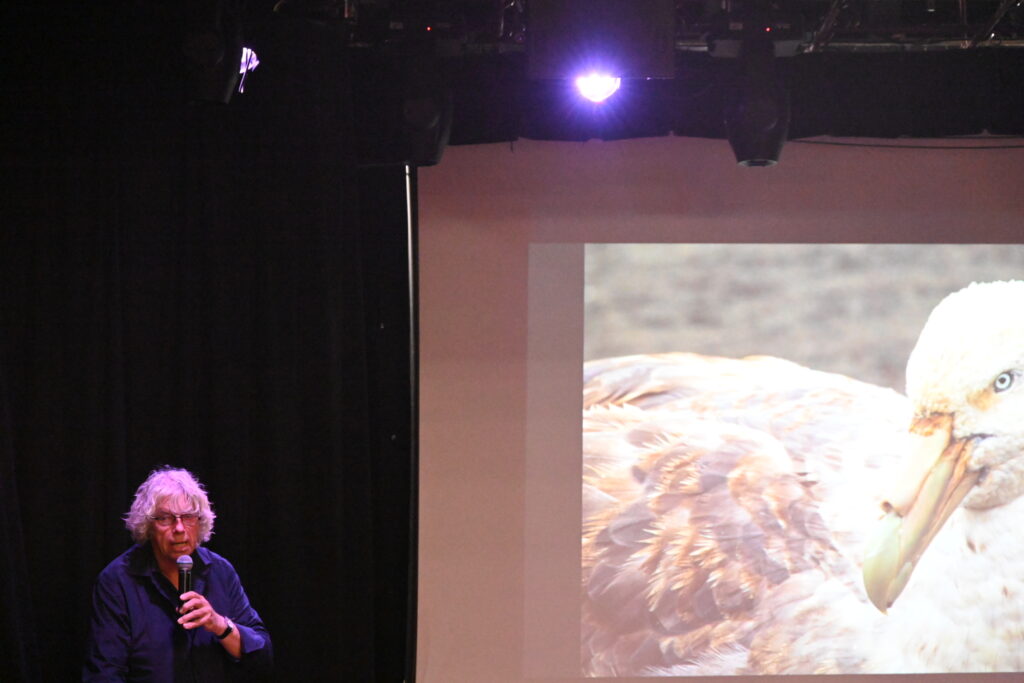
He includes some fine examples of birder slang including a tick (finding a bird), a mega-tick (a rare bird), dip (to miss seeing a rare bird), and a crippler (a mega-tick which leaves you emotionally crippled by its rare beauty).
Then Alex explains the Beaufort system:

With the help of a very practical exercise in which Malcolm experiences all 12 degrees of the Beaufort scale in the span of roughly 60 seconds:
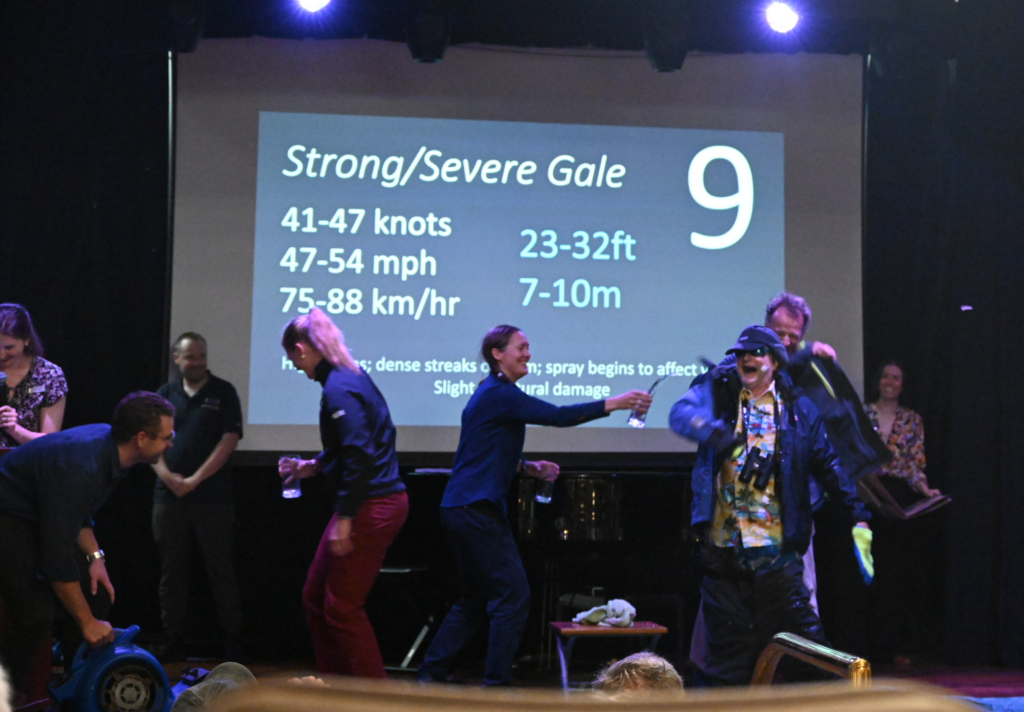
It’s a much-needed laugh after a long day.
Off to dinner, where we had some very spicy tomato shorba soup:
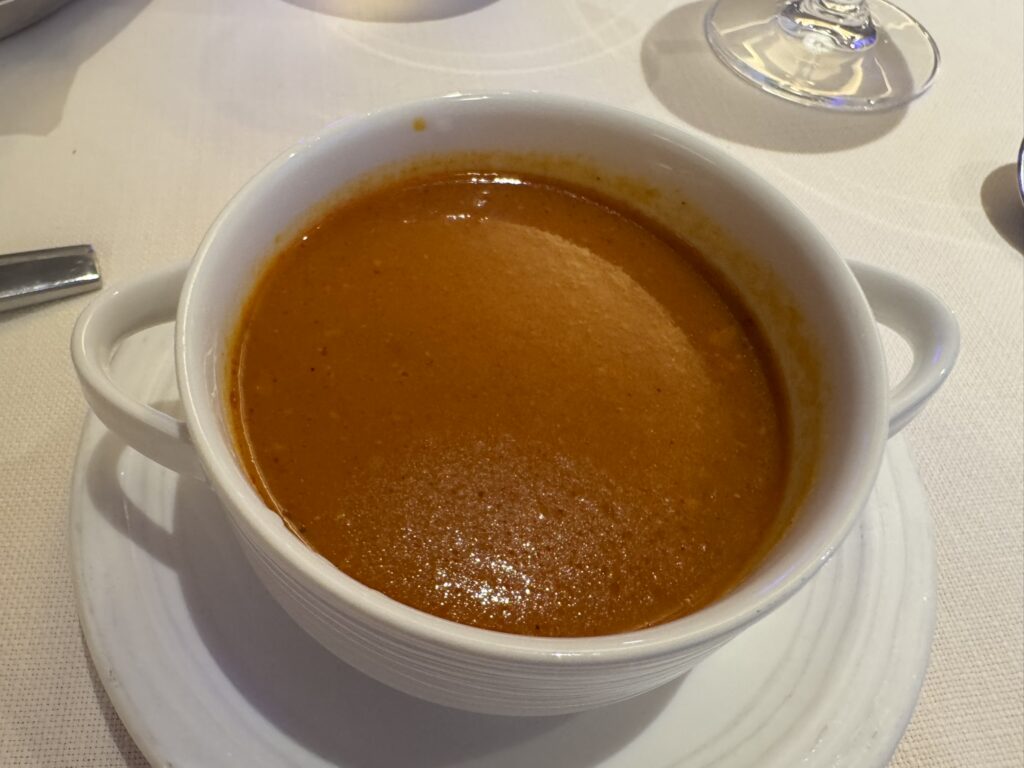
And the much-anticipated Tristan lobster:
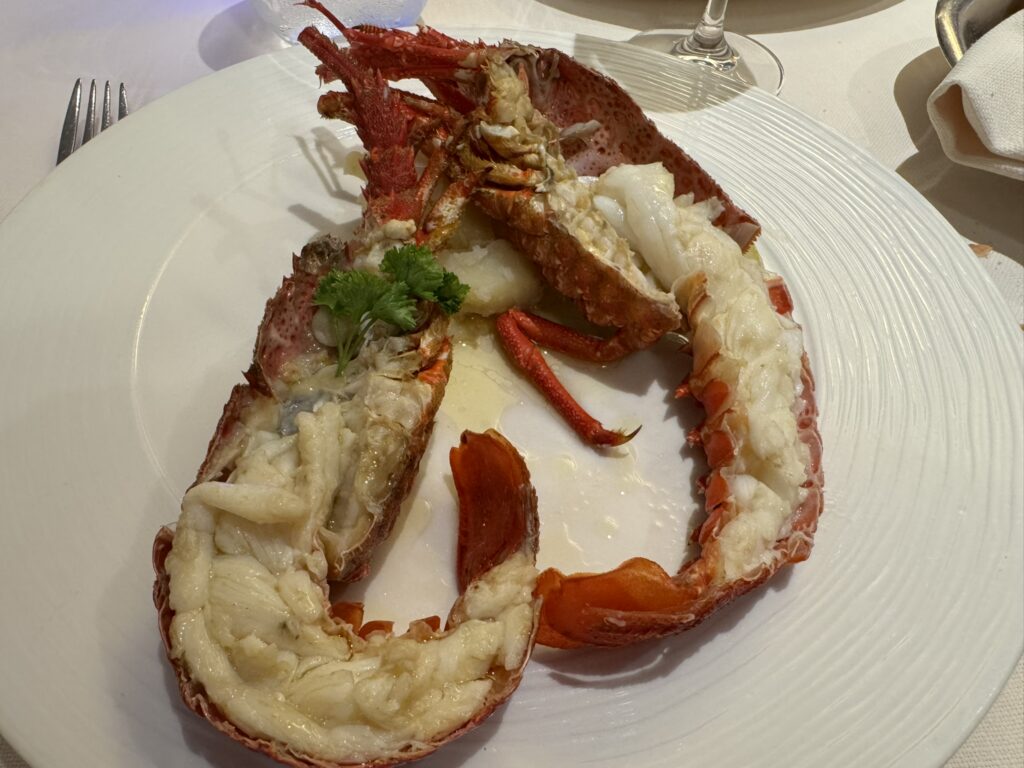
It was delicious.
I rounded mine off with a chocolate syllabub.

Off to bed. Thrilled to report is that maintenance has attempted to fix my flexing cabin wall, and seems to have done a fine job of doing so. Not sure what prompted this effort after we were told it couldn’t be done, but we shant second-guess this silver lining aboard the Silver Wind.
